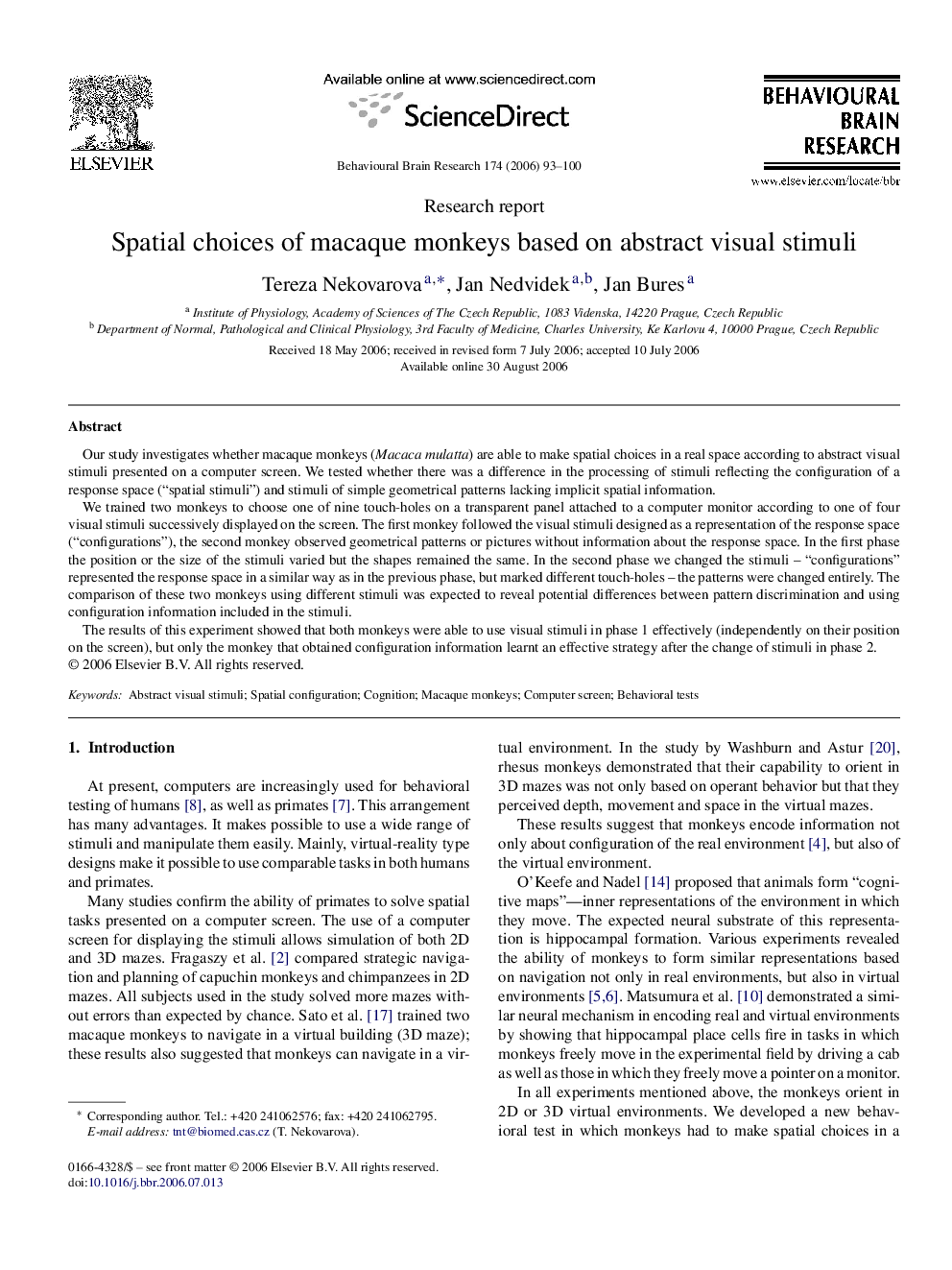| Article ID | Journal | Published Year | Pages | File Type |
|---|---|---|---|---|
| 4315846 | Behavioural Brain Research | 2006 | 8 Pages |
Our study investigates whether macaque monkeys (Macaca mulatta) are able to make spatial choices in a real space according to abstract visual stimuli presented on a computer screen. We tested whether there was a difference in the processing of stimuli reflecting the configuration of a response space (“spatial stimuli”) and stimuli of simple geometrical patterns lacking implicit spatial information.We trained two monkeys to choose one of nine touch-holes on a transparent panel attached to a computer monitor according to one of four visual stimuli successively displayed on the screen. The first monkey followed the visual stimuli designed as a representation of the response space (“configurations”), the second monkey observed geometrical patterns or pictures without information about the response space. In the first phase the position or the size of the stimuli varied but the shapes remained the same. In the second phase we changed the stimuli – “configurations” represented the response space in a similar way as in the previous phase, but marked different touch-holes – the patterns were changed entirely. The comparison of these two monkeys using different stimuli was expected to reveal potential differences between pattern discrimination and using configuration information included in the stimuli.The results of this experiment showed that both monkeys were able to use visual stimuli in phase 1 effectively (independently on their position on the screen), but only the monkey that obtained configuration information learnt an effective strategy after the change of stimuli in phase 2.
